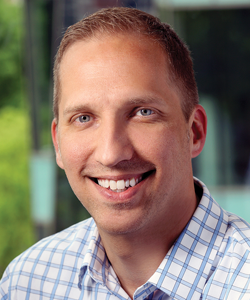Spinal stenosis ranks among the most common reasons for spinal surgery and is expected to affect more than 60 million Americans by 2025. Although significant strides have been made in surgical techniques for spinal stenosis, patient outcomes associated with these procedures vary greatly.
Research has shown that many patients who undergo back surgery for spinal stenosis do not follow through with physical therapy (PT) or home exercises, and many never even engage in postoperative rehabilitation. Some studies show that up to 40% of back surgery patients continue to experience postoperative pain. This tends to result from loss of muscle tone after years of back pain and reduced spine mobility. Rehabilitation is further complicated by the fact that surgical incisions in back surgery are made deep into the muscle tissue during these operations, which can slow recovery.
“Efforts are needed to understand the drivers behind why patients have good or poor outcomes following back surgery for spinal stenosis,” says Richard L. Skolasky, ScD. “We know that patients play a critical role in their recovery after these procedures through their active engagement in rehabilitation programs. However, it can be challenging for physicians and other healthcare providers to provide support for patients to actively partake in these programs.”
A Phone Intervention
In a study published in Physical Medicine and Rehabilitation, Dr. Skolasky and colleagues examined the effect of using a phone counseling intervention that addressed participation in rehabilitation programs after back surgery. The study involved 122 patients aged 46 to 72 who underwent surgery between 2009 and 2012 to correct spinal stenosis. All patients in the study were prescribed home exercise programs or PT to help shorten the recovery period after their surgery.
The intervention group received a series of phone counseling sessions from a spinal surgery counselor who was trained in motivational interviewing. “This interviewing technique engages patients in their care and makes them active participants in their recovery,” Dr. Skolasky says. In previous research, motivational interviewing has been shown to improve diabetes self-care practices and the management of hypertension. It has also been linked to improving safe-sex practices among teens.
The first phone session occurred a few weeks before patients had their surgery and addressed the importance of PT and exercise, the patient’s individualized goals for recovery, and potential barriers that the patients may perceive in getting involved in PT and exercise programs. Two follow-up “booster” phone sessions were then conducted at 6 weeks and 3 months after surgery to see how well the plan was working.
“The phone calls were designed to reinforce the perceived value that PT and back-strengthening exercise regimens play and to support adherence to these programs following surgery,” says Dr. Skolasky. “These calls were intended to increase patient self-awareness on their perceptions about care. The calls also improved the dialogue between counselors and patients, making it a collaborative effort rather than have instruction go only one way.”
Powerful Results
When compared with the control group, patients who received the phone counseling intervention were more likely to participate in PT and home exercise. “Intervention patients also experienced less pain and less disability 6 months after their surgery,” Dr. Skolasky says (Table). At 6 months after surgery, 74% of patients receiving the phone counseling intervention had significant improvements on standard measures of physical functioning and self-reported measures of pain, compared with a 41% rate that was observed among those not receiving the calls.
“Our results suggest that a short series of phone conversations with trained counselors can improve patient activation, boost recovery, and reduce postoperative pain after spinal surgery,” says Dr. Skolasky. “The phone intervention is a relatively inexpensive and simple approach to care that appears to help maximize surgical outcomes.”
Consider Potential Barriers
Although the phone counseling sessions increased patient engagement rates, about one-third of participants remained resistant to the intervention. Several factors appeared to increase the likelihood of patient disengagement, including:
- Low self-confidence in the ability to perform exercises.
- Poor confidence in being able to get to PT sessions.
- Fear of movement.
- Concern about pain management.
Dr. Skolasky says these barriers should be kept top of mind when managing patients undergoing back surgery. Addressing these factors early in the course of care should lead to greater improvements in rehabilitation engagement.
Important Implications
According to Dr. Skolasky, the intervention used in the study is relatively easy to incorporate into other hospital settings and academic medical centers. “Motivational interview training for counselors took just 6-hours to completed, followed by a booster training program several weeks later,” he says. “Approaches like this could play an important role in improving patient outcomes and reducing healthcare spending.” These efforts are important considering that hospitals are increasingly being evaluated on the quality of care they provide.



 PWeekly
PWeekly